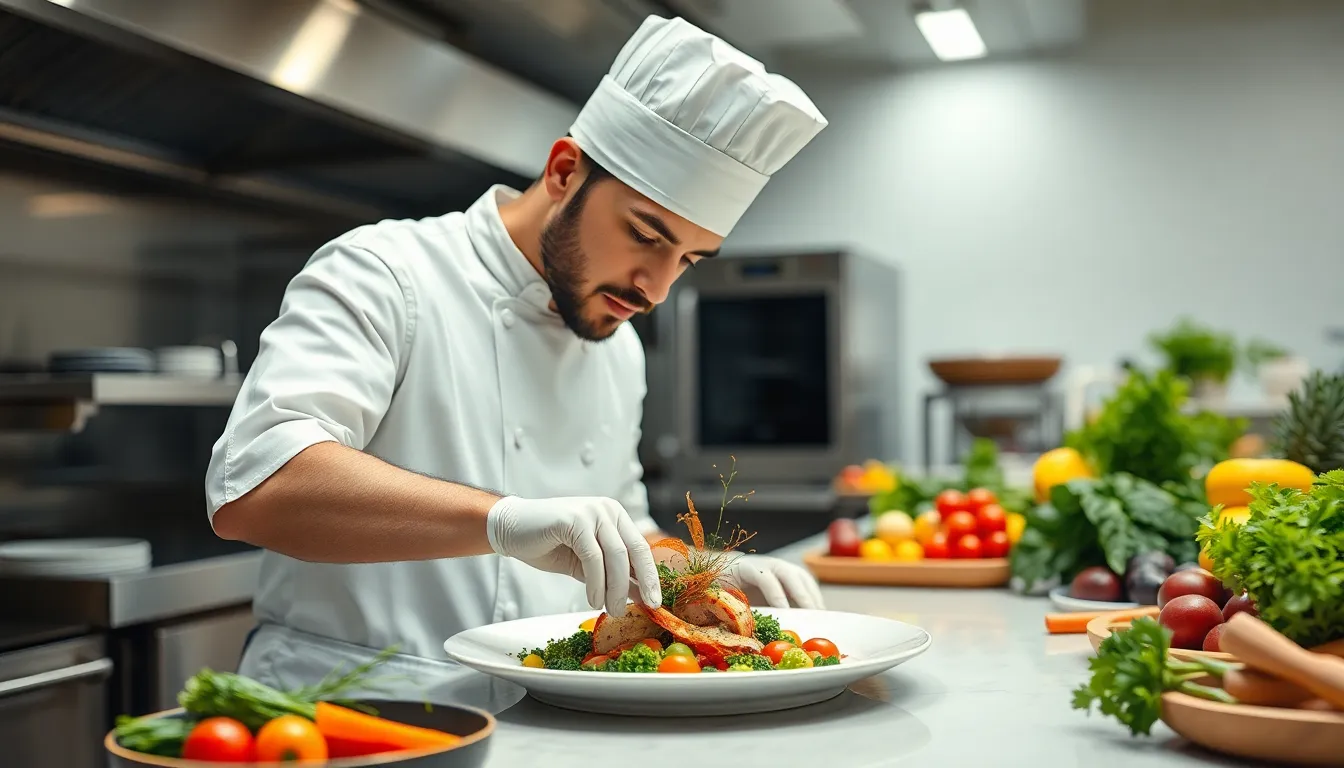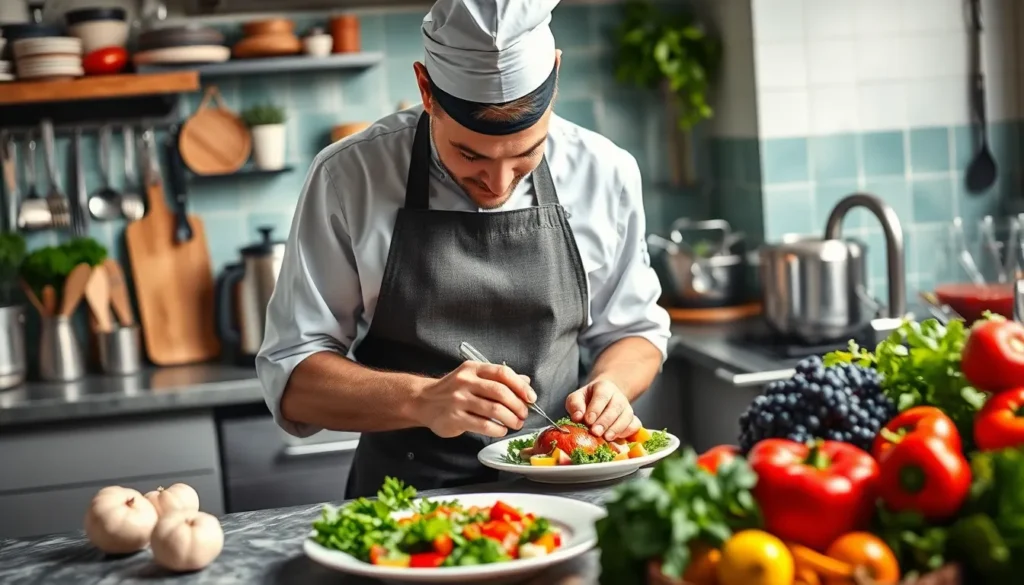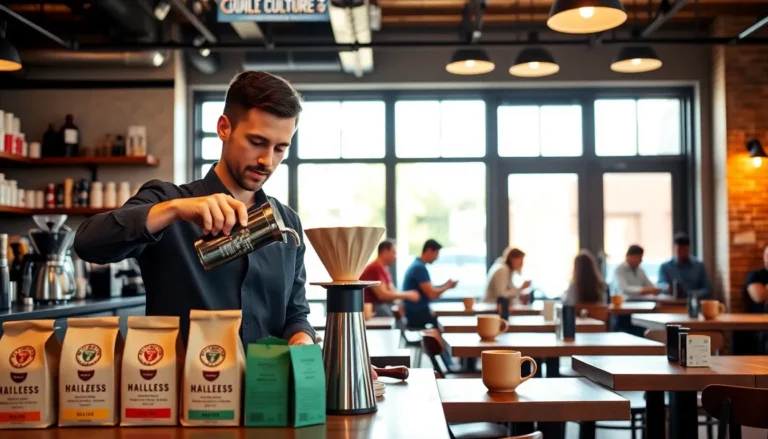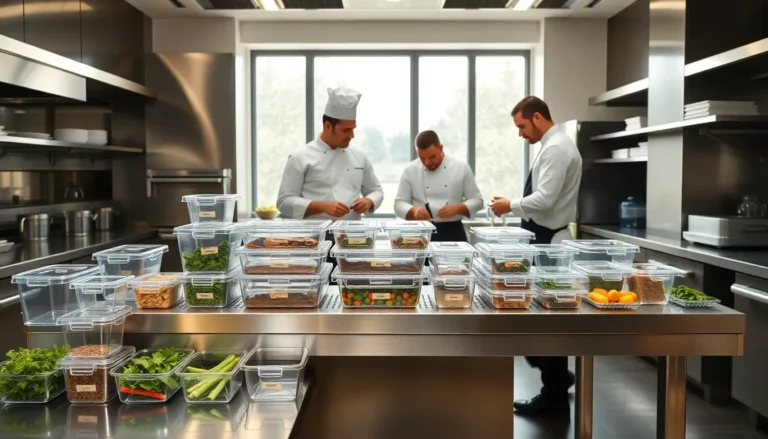Modern cuisine is a vibrant tapestry woven from diverse culinary traditions, innovative techniques, and a passion for experimentation. Chefs today are pushing boundaries, blending flavors and textures in ways that challenge conventional dining experiences. With influences from around the globe, the modern kitchen has become a playground for creativity, where every dish tells a unique story.
As diners become more adventurous, the demand for fresh, bold flavors rises. This evolution in gastronomy not only reflects changing palates but also embraces sustainability and local sourcing. From molecular gastronomy to plant-based innovations, modern cuisine is redefining how people perceive food. In this exploration of contemporary culinary arts, readers will discover what makes modern cuisine so exciting and why it continues to captivate food lovers everywhere.
Table of Contents
ToggleOverview of Modern Cuisine
Modern cuisine represents a vibrant evolution of cooking practices, integrating global influences and innovative techniques. Chefs worldwide craft dishes that highlight a blend of traditional and contemporary flavors, responding to the culinary desires of adventurous diners. The focus on unique presentations and extraordinary taste experiences defines this culinary movement.
Sustainability stands at the forefront of modern cuisine, with many chefs prioritizing local sourcing of ingredients. This commitment not only supports local agriculture but also enhances flavor profiles by using fresh, seasonal produce. Diners increasingly favor meals that present ethical considerations alongside taste.
As technology advances, techniques such as molecular gastronomy gain popularity. These methods allow chefs to manipulate textures and forms, creating imaginative dishes that surprise and engage the senses. Plant-based innovations also play a crucial role, appealing to a growing demographic seeking healthier and environmentally friendly options.
Modern cuisine fosters a dynamic culinary landscape where tradition meets creativity, enticing food enthusiasts to explore the limits of taste and experience.
Key Elements of Modern Cuisine

Modern cuisine features innovative techniques and diverse ingredients, creating unique dining experiences that appeal to adventurous palates.
Techniques
Techniques in modern cuisine showcase creativity and precision. Chefs often employ sous-vide cooking, allowing for consistent results and enhanced flavors. Techniques like molecular gastronomy incorporate science to transform texture and presentation, engaging diners with unexpected flavors and formats. Fusion cooking combines elements from various cultures, resulting in intriguing flavor profiles. Additionally, methods such as fermentation enhance taste complexity, while plating strategies focus on aesthetics, turning dishes into visual masterpieces.
Ingredients
Ingredients play a vital role in modern cuisine, emphasizing quality and sustainability. Chefs prioritize fresh, local produce, often sourcing from nearby farms to ensure seasonal flavors. Organic and ethically raised meats are commonly used, aligning with consumer preferences for sustainability. Global influences introduce diverse spices and herbs, broadening flavor horizons. Plant-based ingredients gain popularity, reflecting dietary trends and promoting health-conscious choices. Unique items like edible flowers and specialty oils contribute to distinctive tastes and visually appealing dishes.
Influential Chefs in Modern Cuisine
Modern cuisine is shaped by visionary chefs who innovate and redefine culinary boundaries. Their commitment to quality and creativity drives the evolution of dining experiences.
Notable Figures
- Ferran Adrià
Ferran Adrià, renowned for his work at elBulli, revolutionized the culinary scene with techniques like molecular gastronomy. His emphasis on experimentation changed how chefs approach flavor and texture.
- Wylie Dufresne
Wylie Dufresne, known for his acclaimed restaurant wd~50, focuses on molecular gastronomy and playful presentations. His inventive dishes challenge traditional perceptions of food.
- Daniel Humm
Daniel Humm, head chef at Eleven Madison Park, emphasizes local ingredients and seasonal menus. His approach showcases simplicity and elegance, pushing modern cuisine towards sustainable practices.
- Alice Waters
Alice Waters pioneers the farm-to-table movement in American cuisine. Her commitment to organic, locally sourced ingredients has inspired countless chefs to prioritize sustainability.
- Massimo Bottura
Massimo Bottura, chef-owner of Osteria Francescana, blends tradition with innovation. His creative interpretations of Italian classics reflect modern culinary artistry.
Culinary Innovations
- Sous-vide Cooking
Sous-vide cooking allows precise temperature control for enhanced flavors and textures in meats and vegetables. This technique ensures consistent results, elevating dish quality.
- Molecular Gastronomy
Molecular gastronomy explores the science behind cooking. Techniques like spherification and foaming transform traditional dishes into multi-sensory experiences.
- Fusion Cooking
Fusion cooking blends elements from various cuisines, showcasing creativity and cultural exchange. Chefs experiment with diverse ingredients and techniques to create unique flavor profiles.
- Aesthetic Plating
Aesthetic plating focuses on visual appeal, transforming dishes into art. Techniques emphasize color, texture, and arrangement, enhancing the dining experience.
- Plant-Based Innovations
Plant-based innovations cater to health-conscious diners. Chefs create dishes with vegetables and alternative proteins, pushing the boundaries of flavor while promoting sustainable eating.
Regional Variations in Modern Cuisine
Modern cuisine exhibits significant regional variations that reflect local cultural influences and culinary techniques. Chefs across the world adapt their methods and ingredients, creating distinctive dishes that showcase their heritage.
European Influence
European cuisine plays a central role in modern culinary practices. Countries such as France and Italy contribute classic techniques and rich flavors. French culinary arts, known for precision and sauce-making, influence numerous chefs, emphasizing techniques like emulsification and sous-vide cooking. Italian cuisine offers a focus on high-quality, seasonal ingredients, cultivating the use of fresh herbs, artisanal cheeses, and handcrafted pasta. Modern reinterpretations of these cuisines often blend traditional recipes with contemporary techniques to create innovative dining experiences. Examples include deconstructed tiramisu and truffle-infused risottos.
Asian Adaptations
Asian cuisines significantly shape modern gastronomy through the incorporation of bold flavors and diverse cooking styles. Chinese, Japanese, and Thai influences introduce techniques like stir-frying, sushi-making, and spicy seasoning. Chefs often incorporate ingredients such as miso, sambal, and lemongrass to create fusion dishes that appeal to adventurous palates. For instance, sushi burritos combine the concept of sushi with a handheld format, merging culinary traditions seamlessly. The popularity of street food-inspired dishes also reflects the adaptability of Asian cuisine, inviting chefs to explore new flavor combinations while keeping the essence of the original dishes.
Sustainability in Modern Cuisine
Sustainability plays a crucial role in modern cuisine as chefs prioritize environmental responsibility alongside culinary innovation. Chefs embrace methods that reduce waste, conserve resources, and support local economies.
- Local Sourcing: Many chefs now opt for local produce and meats, reducing carbon footprints while sourcing the freshest ingredients. This practice fosters relationships with local farmers, ensuring quality and seasonal availability.
- Seasonal Menus: Seasonal ingredients dictate menu designs, reflecting what’s ripe and available. Chefs adjust offerings throughout the year, highlighting local flavors and reducing reliance on out-of-season produce.
- Waste Reduction: Techniques to minimize waste have become essential in modern kitchens. Chefs implement practices like utilizing all parts of ingredients and composting scraps, transforming potential waste into compost or creative dishes.
- Plant-Based Options: An increase in plant-based dishes supports sustainability by lowering the environmental impact associated with meat production. Chefs craft inventive recipes that emphasize vegetables, grains, and legumes as primary components.
- Ethical Sourcing: Many chefs focus on ethically sourced seafood and meats, ensuring that their suppliers follow sustainable practices. Certification programs, such as the Marine Stewardship Council, help guide these decisions.
- Eco-friendly Practices: Kitchens adopt various eco-friendly measures, including energy-efficient appliances, recycling programs, and water conservation techniques, further contributing to sustainability efforts.
Sustainability in modern cuisine not only addresses environmental concerns but also enhances flavor and dining experiences. Chefs create dishes that reflect a commitment to quality and responsibility, resonating with discerning diners who value both taste and ethical practices.
Modern cuisine stands at the intersection of tradition and innovation. Chefs are redefining culinary boundaries while embracing sustainability and local sourcing. This vibrant evolution captures the essence of diverse flavors and techniques that excite adventurous diners.
As culinary enthusiasts continue to explore bold tastes and aesthetic presentations, the commitment to quality and responsibility remains paramount. The integration of global influences and eco-friendly practices not only enhances the dining experience but also reflects a deeper awareness of environmental impact.
In this ever-evolving landscape, modern cuisine invites everyone to embark on a journey of flavor and creativity, promising an exciting future for gastronomy.



